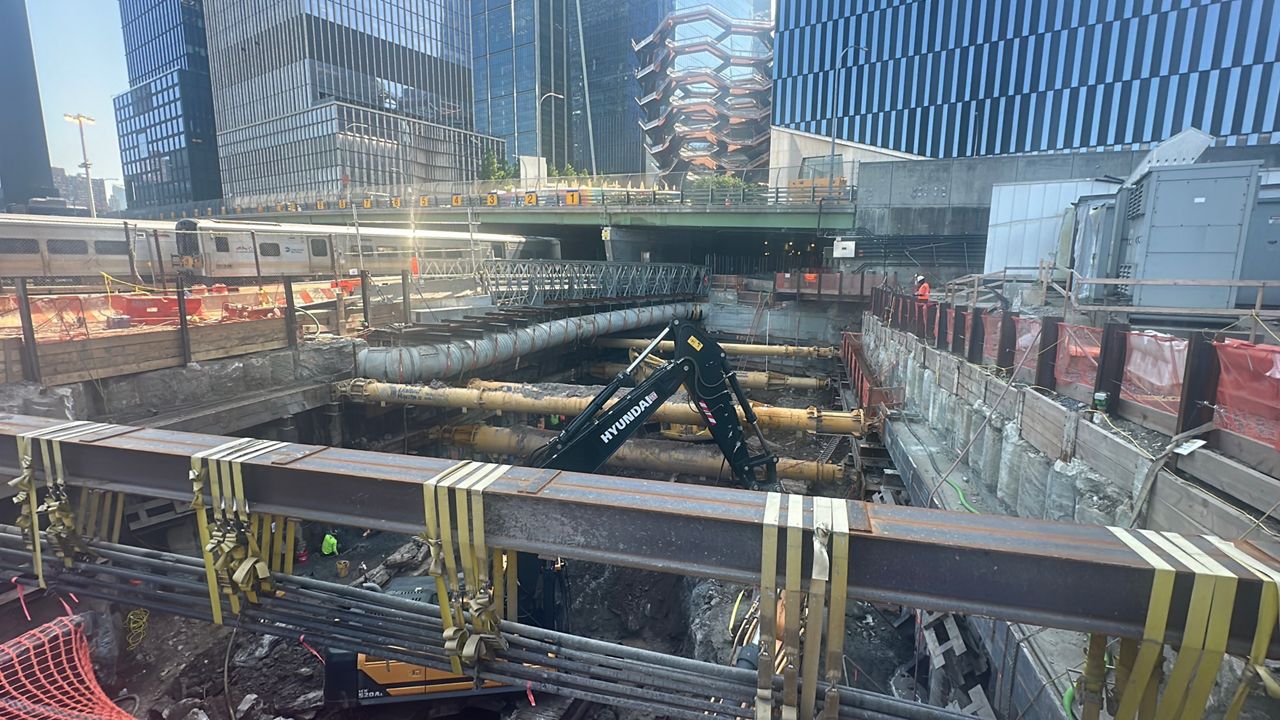It may be just another road in New Jersey to some, but you could call a brand new underpass in North Bergen the gateway to the Gateway Tunnel.
“We’re building an underpass so that the tunnel boring machines can actively go back and forth underneath Tonnelle Avenue,” said John Schweppenheiser, a construction manager with Niak Consulting, one of many contractors on the Gateway Tunnel project.
What You Need To Know
- Last July, the Gateway Program Development Commission secured the last piece of the $16 billion in federal funding to build the second tunnel under the Hudson to provide more reliable rail service between New York, New Jersey and beyond
- There are 10 construction sites, five now active, two already completed under Hudson Yards and one under the Hudson
- Much of the work is done around and under active roads, highways, utilities, the LIRR West Side Rail Yard and the High Line, which had to be suspended on concrete girders and requires constant structural monitoring
- Other challenges include hardening the far West Side bulkhead of Manhattan, which is landfill, and removing obstructions like what was left from the elevated West Side Highway steel foundations
It’s actually U.S. 1 and 9, the busiest non-tolled road in the state.
“We had to build this in stages to maintain the vehicular traffic on Tonnelle Avenue. [It was] very, very important that we did not impact traffic,” Schweppenheiser said.
This is just one of 10 different construction sites, five now active, that make up the Gateway Tunnel Project. It was only a year ago the final piece of the $16 billion in federal funding was secured to finish it.
Overseeing it all, former MTA Chair and CEO Tom Prendergast.
“This is money from New York. It represents, you know, people’s livelihood,” Prendergast said. “But the most important thing is it’s a project that is going to increase the reliability of the service into Penn Station from New Jersey. Actually, the entire station.”
But there is still plenty of work to do before that, requiring a lot of coordination between different contractors and sections.
North Bergen is where the tunnel boring machines will make their way through the Jersey Palisades next year to Weehawken, where different machines will be sent down a shaft to start tunneling under the river.
Those will then bore through a concrete box being built inside a coffer dam where the riverbed consistency is too soft, through to the Manhattan bulkhead, another challenging area made from landfill that also has to be stabilized.
“They’ll circulate cold brine through these pipes to freeze the ground, to create a hardened mass,” Benjamin Engle, senior program manager for Program Planning at the Gateway Development Commission, said.
“They’ll excavate the material. They’ll remove obstructions that are within Route 9A, 12th Avenue, including the former foundations, steel foundations of the West Side Highway that were abandoned in place when they tore the highway down,” he continued.
The tunnel will connect to the Hudson Yards Concrete Casing across 30th Street, where a trench will gradually lead the tunnel up to the elevation of Penn Station.
While the tunnel project itself is massive and complicated, making it even more difficult is having to work around active utilities, streets, highways and even an active train yard.
“We had to support the Long Island Rail Road substation, which supplies all of the power for the West Side storage yard, which is a major key hub for MTA Long Island Rail Road,” Leroy Antoine, project manager for Hudson Yards Concrete Casing 3, said. “We have several instrumentation and monitoring points all throughout the site.”
Even the High Line posed a challenge.
“We had to underpin the High Line,” Antoine said. “Which is, essentially, support the High Line while we dug underneath it.”
This portion will be finished at the end of 2026. The tunnel itself will open in 2035.
